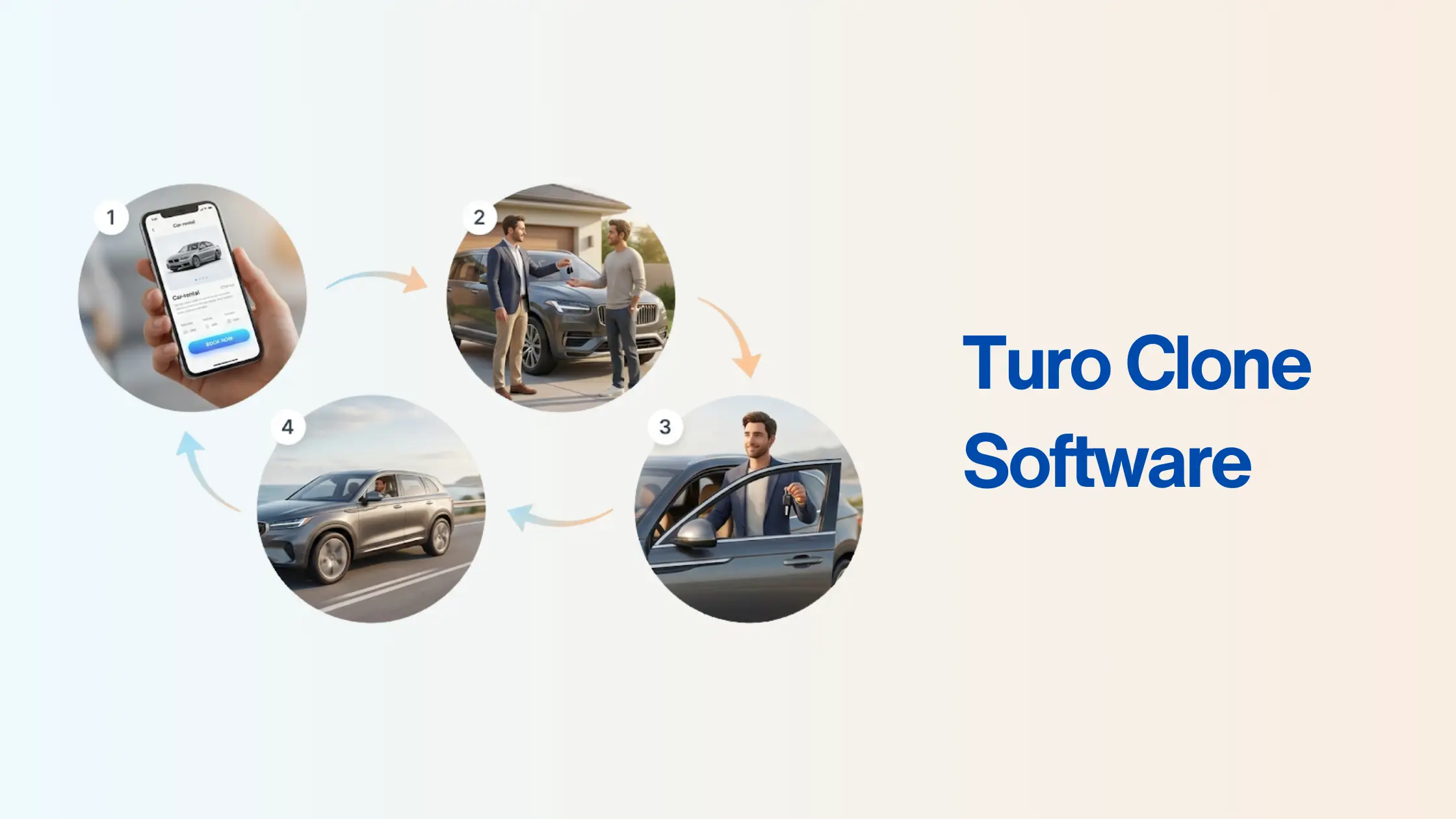Kijiji is a hugely popular classifieds platform in Canada that allows people to easily buy, sell and exchange products and services locally. In this comprehensive guide, we’ll provide a step-by-step walkthrough on how to create your own classifieds website similar to Kijiji.
We’ll cover the story behind Kijiji’s impressive growth, its business model, the technology and features needed to build a similar site, marketing strategies and realistically how much it costs. Our goal is to give you a blueprint to follow if you want to launch Kijiji Clone Let’s get started!
The Story Behind Kijiji's Success
To understand how to replicate Kijiji’s winning formula, we first need to understand its origins and growth trajectory.
Kijiji, which means “village” in Swahili, was launched in 2005 as a joint venture between eBay and several newspaper companies in Canada. The goal was to create a localized version of the popular US classifieds site Craigslist.
Within a remarkably short period, It overtook entrenched sites like Craigslist and became the undisputed leader in Canadian online classifieds. So what led to its meteoric rise? A few key factors played a role:
Leveraging eBay’s expertise – Being backed by eBay, a pioneer in online classifieds, gave Kijiji instant credibility and knowledge to tap into. This allowed them to get ahead of copycat competitors.
Harnessing network effects – Kijiji benefited tremendously from positive feedback loops. More users led to more listings which attracted even more users. This pattern allowed Kijiji to scale rapidly to become the default platform.
Hyperlocal focus – Unlike Craigslist which covered many geographies, Kijiji laser focused on providing a localized experience tailored for Canadian cities and communities. This helped drive engagement.
Intuitive interface – The site was designed for simplicity allowing anyone to seamlessly navigate categories and post listings with photos. Lower barriers to usage led to more participation.
By 2011, Kijiji had become the most visited classifieds site in Canada with over 9 million monthly users. Seeing its runaway success, eBay acquired full ownership from its newspaper partners to take full control.
Today the platform sees over 1 billion page views per month and earns over $200 million in annual revenue. Understanding the playbook that enabled Kijiji to dominate Canada sets us up nicely to replicate its model in a niche region or vertical.
Kijiji Business and Revenue Model
For any entrepreneur looking to build the next Kijiji or Craigslist, understanding the business model is key. How does it actually make money when anyone can post listings for free?
The core of Kijiji’s business model is providing free classifieds listings for individuals and monetizing through optional paid upgrades for a subset of sellers and advertisers. Here are the main revenue streams:
- Promoted/Highlighted Listings – Sellers can pay a fee to highlight their listings to get increased visibility. This accounts for the bulk of revenues.
- Kijiji Auto – Car dealerships pay for premium listings with photos/descriptions to attract buyers.
- Transaction/Success Fees – For certain high-value categories like services, real estate or tickets, It charges a small transaction fee when a sale is completed.
- On-site Advertising – It allows targeted text and display advertising related to products and services on the site.
The key to profitability is the sheer volume of listings and traffic that Kijiji attracts. Even though only a small percentage opt for paid listings, this results in substantial revenue given the number of users.
They also invests heavily in trust and safety features and community moderation to prevent spam and fake listings – this promotes an environment where users feel comfortable transacting safely.
Now that we understand their formula, let’s go step-by-step through how to build a similar classifieds site or marketplace.
How to Create a Website Like Kijiji in 8 Steps
Developing a classifieds platform like Kijiji involves thoughtful planning, the right tools and incremental progress. Here are the 8 key steps we recommend based on proven strategies:
Step 1: Choose a Domain and Web Hosting
Every website starts with a domain name and web hosting account. The domain is your unique address on the internet, for example yoursite.com.
Web hosting provides the actual server where your site’s files are stored and displayed. For a new site, shared hosting works fine and costs $5 – $15 per month.
When choosing a top-level domain, .com is best for an open marketplace. For local sites, you can use your city name e.g. seattleclassifieds. com.
For hosting, reputable providers include Bluehost, HostGator, SiteGround and more.
Step 2: Install WordPress & Optimize Themes
The next step is deciding what software to build your classifieds platform on. We strongly recommend using WordPress since it powers over 40% of all websites.
As an open-source CMS (content management system), WordPress makes it easy to develop full-featured sites without needing to code everything from scratch.
Your web hosting provider should offer 1-click WordPress installation. Once installed, there are specialized themes like Listify, Classipress and Classima perfect for launching a classifieds site quickly.
The advantage of WordPress is the ability to customize and scale your site with thousands of plugins. For a new site, choose a fast, simple theme that is mobile-responsive. Avoid bloated themes.
Step 3: Set Up Your MySQL Database
WordPress will set up a MySQL database to store all your pages, posts and content. But for a marketplace, you need additional databases to manage listings, user accounts, payments etc.
Your hosting provider will provide access to phpMyAdmin where you can easily create additional databases and tables.
For example, you may want separate databases for listings, registered users, reviews, transactions etc. Proper structure here will make development easier.
Step 4: Build Page Templates
At this point, you can start fleshing out the actual front-end design and experience of your classifieds site using WordPress pages and posts.
Some essential pages to create templates for include:
- Homepage – Focus on search and browsing by category/location.
- Listing detail page – Display photos, descriptions, seller details etc.
- User profile pages – Allow sellers to manage their listings and identity.
- About page – Share your story, contact info, services.
- FAQ/rules/safety pages – Build trust by explaining processes.
The goal is crafting an intuitive experience. Refer to sites like Kijiji and Craigslist to determine optimal layouts and flows for your pages.
Step 5: Set Up User Accounts and Profiles
A user account system is the backbone of any marketplace allowing sellers to register and manage their listings.
There are WordPress plugins like UserPro and Ultimate Member that handle user profiles, login/registration, access levels and more.
For user accounts, make sure to collect essential details like username, location, phone number and ID verification to prevent spam. Sellers should have dashboards to create, edit and monitor their listings.
Step 6: Integrate Payment Processing
To unlock revenue streams from highlighted and featured listings, you need to integrate payments processing.
Stripe and PayPal provide APIs to easily accept payments on WordPress. For best practices, store any sensitive financial data (like credit card numbers) only with the payment processor and not on your servers.
Consider free basic listings for individuals and hobbyists while offering paid upgrades for dealers, businesses and high-volume sellers looking for maximum visibility.
Step 7: Build Marketplace Features
The core of your online marketplace is the algorithms, systems and interfaces powering interactions between buyers and sellers including:
- Search and filters to easily find relevant listings. Prioritize location and categories.
- Flagging system for reporting issues to admins. Moderation is crucial.
- Anonymous email relay for initial communication between buyers and sellers without revealing personal details.
- Review and rating systems to establish seller reputations and trust.
Take time to refine these components that enable a safe, trusted user experience. Learn continuously from user feedback.
Step 8: Growth Marketing
Once built, the biggest challenge is attracting an initial critical mass of buyers and sellers. A deliberate growth strategy is required, including:
- Search engine optimization to boost Google rankings for relevant product and location keywords.
- Local partnerships with complementary businesses who can promote your site to their customers.
- Paid Facebook and Google ads targeted locally to your ideal audience.
- Promotions on high-traffic directories related to your niche/region.
- Referral incentives to motivate existing users to spread the word.
Monitor traffic sources and refine your marketing approach based on data. Be creative in finding your first users cost-effectively.
What Does It Cost to Build a Site Like Kijiji?
For many entrepreneurs, potential development and marketing costs are major factors when considering a classifieds business. What type of budget is realistic?
Here are the key costs to keep in mind:
- Domain registration and basic shared hosting will run $150 – $500 per year.
- WordPress is free open-source software. Premium themes and plugins will cost $100 – $300.
- If you need extensive custom features, plan $5000 – $15,000+ for professional development assistance.
- Marketing activities like advertising and content creation to gain traction will require several thousand dollars minimum.
- Ongoing expenses for customer support, moderation, server management etc.
As you can see, costs add up quickly. The challenge with marketplaces is that monetization potential only emerges at larger scale after attaining critical mass.
For bootstrapping startups, we advise building the minimum viable product using WordPress and affordable plugins without over-engineering upfront. Invest more in marketing activities and community building early on.
Summing Up
We hope this comprehensive guide provided you a clear roadmap on how to create a classifieds website similar to Kijiji. Here are the key steps we covered:
- Studying successful models like Kijiji to learn from their journey.
- Choosing a lean technology stack like WordPress to launch quickly.
- Prioritizing simple but thoughtful design and user experience.
- Building in features like payments, messaging and reviews tailored for your model.
- Executing growth marketing strategies focused on organic channels initially.
- Monitoring costs carefully and avoiding over-optimization early on.
While not easy, developing a popular online marketplace can be massively rewarding if you solve real consumer problems in your domain. We hope our blueprint gives you clarity in approaching this process and turning your idea into reality. Try our end-to-end Kijiji clone solution to launch your classifieds website quickly and easily.







